Reviews
See 6 Mesmerizing Feats of Jewelry Design From Baselworld 2017
A focus on movement shone through as the dernier cri for luxury pieces.

A focus on movement shone through as the dernier cri for luxury pieces.

by
Ana Finel Honigman

Twinkles abounded at the centennial edition of Baselworld, the world’s premiere luxury watch expo in Switzerland, where winking gems and glistening precious metals attracted thousands of international visitors to gaze into the purveyors’ booths. While brands debuted their new creations on a by-appointment-only basis, the elaborately bespoke stands presented representative heritage and preview pieces in straightforward displays, allowing viewers’ appreciation to focus exclusively on the stones and designs themselves. Although this static museum-style presentation drew admiration, the truth is that jewelry, as wearable works of art, is best experienced worn—a truism especially relevant this year, since the most compelling pieces on offer at Baselworld 2017 facilitate, enhance, or evoke physical movement.
Messika
Placing this aesthetic ethos into its historic context is Messika’s Isadora necklace, inspired by the legendary mother of modern dance, Isadora Duncan. Valérie Messika, the young Parisian designer (and daughter of a renowned diamond specialist) who opened her first boutique on Rue Saint-Honoré in 2013, devotes all her collections to pliant, casual-seeming pieces of exquisite quality stones. Dance is a repeated motif for her collections, and her Isadora line demonstrates the historic lineage of her free-spirited aesthetic. With parallel but asymmetric loosely spaced lines of 139 pear-shaped diamonds, the necklace pays homage to Duncan’s combination of uninhibited, fluid movement while maintaining an order that showcases the stones.
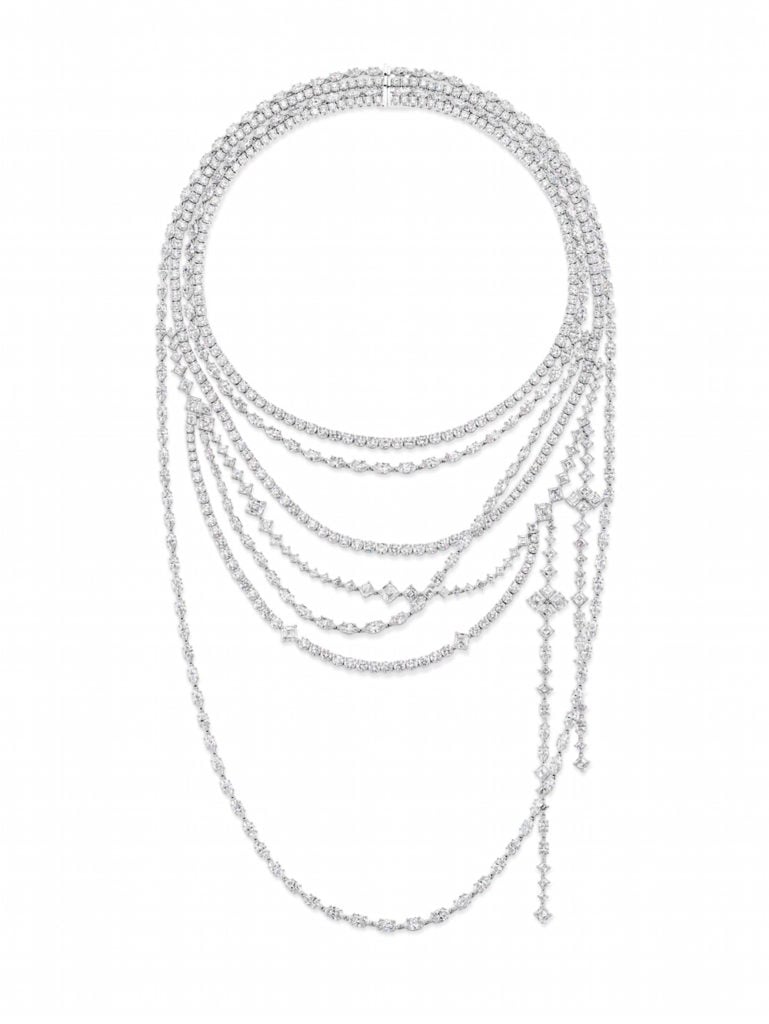
Harry Winston, The Secret Combination Necklace
Harry Winston
Another especially majestic example is Harry Winston’s elegantly insouciant The Secret Combination necklace. Although comprised of 568 marquise, square, emerald-cut, and round diamonds set in platinum and weighing approximately 115.9 carats, The Secret Combination necklace appears to be casually draped. The platinum setting is almost invisible, creating the illusion of diamonds robed together and falling like a silk scarf.
Harry Winston, one of America’s most renowned legacy jewelers, was established in 1932 and became etched in popular consciousness when Marilyn Monroe ecstatically cooed its name in her song “Diamonds Are a Girl’s Best Friend.” But the irreverence of the company’s loosely slung diamond necklace on view at the fair matches the brand’s ingenuity in dressing Hollywood as the first jeweler to loan diamonds to Academy Award actresses in the 1940s. Far from being a stuffy institution, Harry Winston exemplifies a balletic balancing act between being classic and au current.
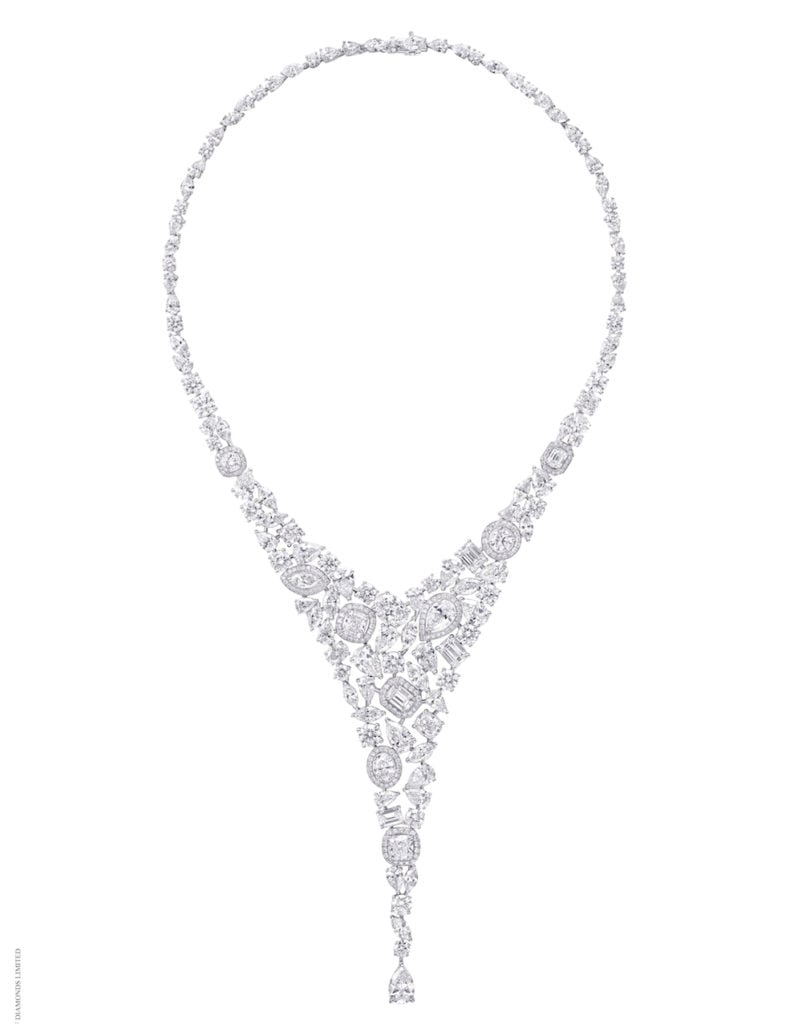
From Graff’s Constellation bridal collection.
Graff
A similarly buoyant and character-driven impression is made by Graff’s Constellation bridal collection, consisting of bracelets, necklaces, earrings, and watches where diamonds of different shapes, sizes, and colors are artfully arranged to resemble a cascade of independent stones. The Constellation collection includes white and yellow diamonds, an artful reference to The Windsor Yellows—Wallis Simpson’s iconic pear-shaped yellow diamonds—that were acquired by the British jeweler at auction in Geneva in the 1980s and incorporated into the brand’s design signature as an inspiration motif.
When worn as bracelets or necklaces, in classic or yellow, the Constellation collection exposes the wearer’s skin between the miro-pavé platinum setting, allowing the pieces to move like fabric against their wearer’s body.
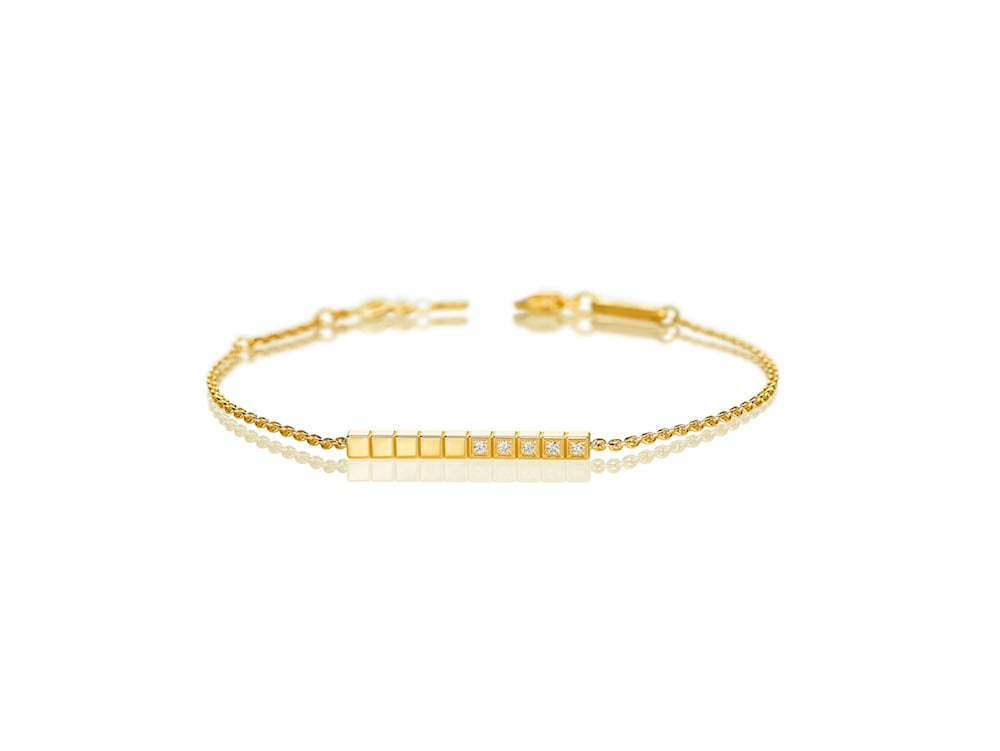
A bracelet from Chopard’s revisited Ice Cube collection.
Chopard
These intimate relationships between the body and stones mean that the diamonds celebrate the wearers’ movements. While Harry Winston’s and Graff’s necklaces wear their weights lightly, making them among Baselworld 2017’s most seriously chic pieces, they share a sensual spirit with Chopard’s revisited Ice Cube collection, crafted to evoke rock-chick cool. Originally conceived in 1999, Chopard’s geometric collection was designed to be architectural, unisex, and imposing with chunky gold cubes and rigid construction. Founded in 1860, Chopard remains a world-leading watchmaker but, after beginning its lines in fine and luxury jewelry in the 1980s, the Swiss brand has become increasingly coveted by a fashion-forward clientele. This conversion into a go-to brand for accomplished professional and artistic women was largely thanks to the original Ice Cube collection’s formidable charisma.
In its current incarnation, termed Ice Cube Pure, the cubes have a more subversive strength. Interspersed with lean chains, the cubes are animated and serpentine. The collection’s leading necklace is a bar of 12 distinct cubes hung to the clavicle on a thin chain. Five out of 10 cubes contain a diamond. The resulting asymmetry is compelling and versatile, a concept that becomes animated in the collection’s reversible bracelet. When the wearer gesticulates and the slinky bracelet slips from her wrist to her arm, it changes face, exposing opposite sections of five diamonds in a row or five gold cubes. Also in the collection are rings that fit above the knuckles (with twins designed for more conventional placement), and earrings that climb the wearer’s lobes.
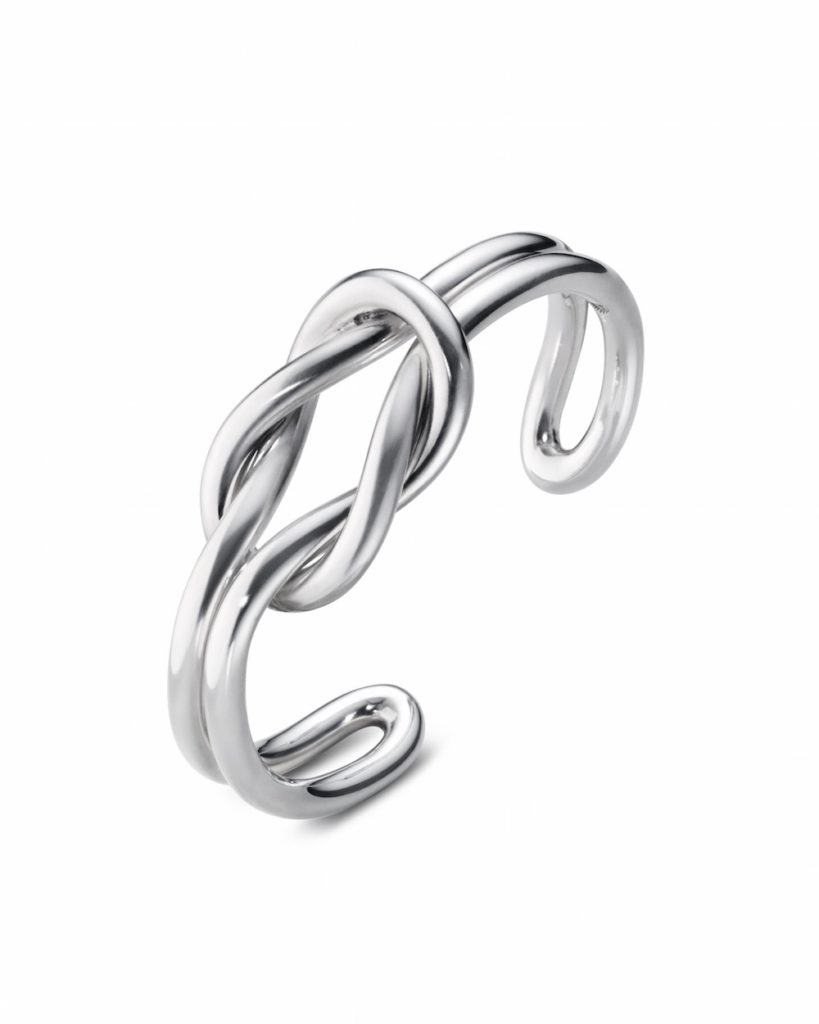
Georg Jensen’s Love Knot bangles
Georg Jensen
Evoking a similar sensibility is Georg Jensen’s single or double-strand silver Love Knot bangles. Drawing upon an archival design, the Copenhagen-based company—founded by the eponymous silversmith in 1899—revived its collection from the 1970s as sculptural and sinewy bracelets. Complex in design yet still minimal and modern in appearance, the bangles evoke the mutually strengthening nature of bonds of true love.
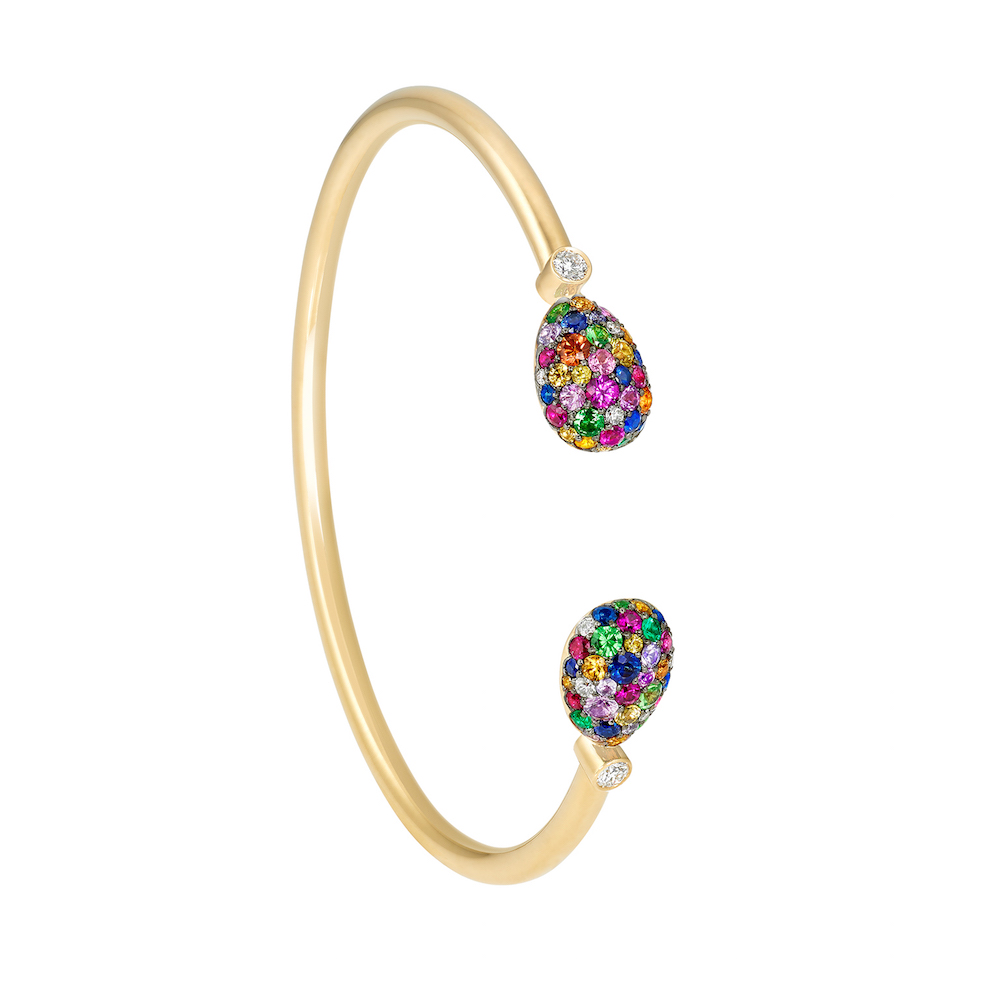
Fabergé Emotion multicolored bangle
Fabergé
While Georg Jensen’s bangles reference flexibility, the gold itself becomes delightfully nimble in Fabergé’s heritage-inspired cuffs. The series of open-set crossover bangles consist of slender bands in 18-karat rose gold, white gold, or yellow gold ending with quilted gold or pavé-set stones in Fabergé’s historic egg shapes, referring the Imperial jeweled and enameled gold Easter eggs designed for the Russian Tsars.
In recent years, Fabergé has revived its cultural significance with an ever-expanding global and multigenerational following imaginatively attached to the egg’s heritage, as well as to its bright and empathic design spirit. As part of the brand’s youthful Emotion collection, the lithe bangles feature exuberantly colored stones, including a playful rainbow cluster referencing Fabergé’s innovative engagement rings. Instead of equating engagements with traditional diamonds, Fabergé encourages couples to select gemstones representing their shared interpretation of their relationship’s emotional character, with the stones representing different states of being.
Like these rings, the new range of cuffs is stackable and designed for effortless wear. Their exceptionally bendable bands sit comfortably on a wrist or a forearm, to be easily worn by wearers of any age, in any time or context.
These pieces, exemplifying high-end jewelry’s fresh grace and flexibility, can elegantly move far beyond Baselworld’s viewing context with their lucky wearers.